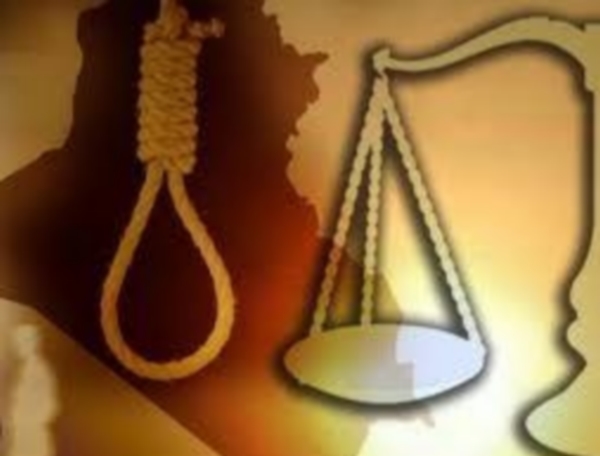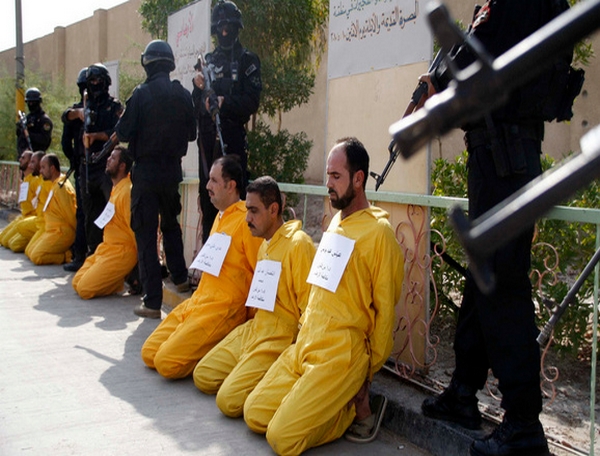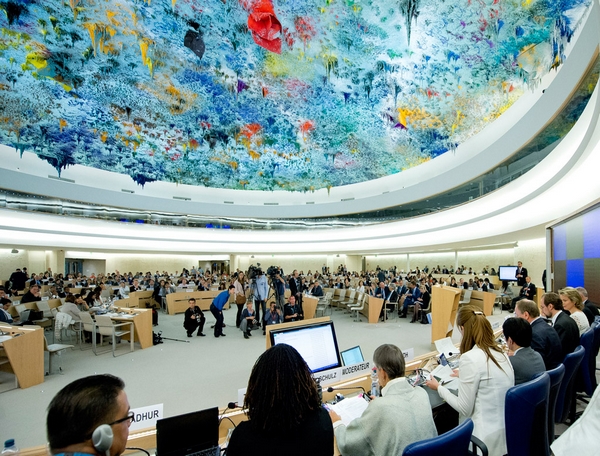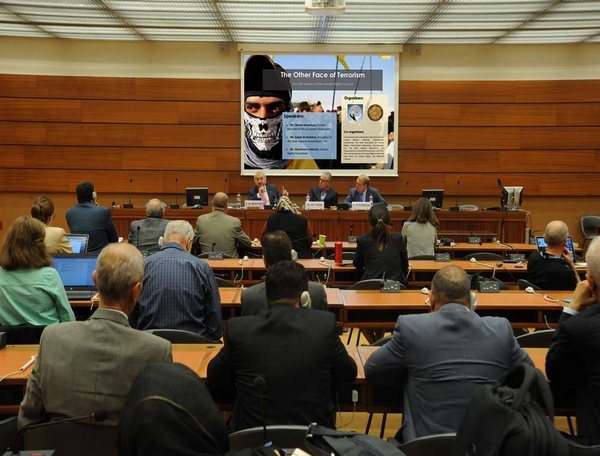System of Death (I): Paul Bremer’s
Morality Police
The recent wave of targeted killings against emo youth in Iraq was done under the pretense of morality. Death has been rationalized in many different ways since the 2003 invasion of the country. This three-part series takes a look at how the system of death was installed by the US occupation and how it keeps fueling itself despite the withdrawal of troops.
In December 2011, the US withdrew its troops from Iraq. But the Green Zone fortress remained, along with around 16,000 State Department staff. Since the start of the occupation, the US has maintained more embassy staff in Iraq than in all its embassies in the world combined. Thousands of special forces and contractors also remain in Iraq.
The occupation, however, has institutionalized itself in more than just staff presence. As soon as the US and UK invaded Iraq, the destruction of the state began. It has been argued that process of destruction had begun under sanctions imposed 13 years earlier.
The moment of invasion was fateful in multiple ways. Within weeks of the fall of Baghdad, Coalition Provisional Authority chief Paul Bremer passed orders 1 and 2, which almost simultaneously kicked off the so-called de-Baathification process of Iraq, and the dissolution of country’s military and security structures. As such, Iraq saw the near-simultaneous dismantlement of the state and its capacity for national self-defense.
The nine years that followed have seen the establishment and consolidation of a political process based on sectarianism, the degradation of secularism, the breaking up of the welfare state, and massive death tolls exceeding 1.4 million, according to some studies.
While plans for the partition of Iraq have yet to be executed, the danger remains.
Fundamentally, excess death in Iraq is neither collateral nor accidental. It is the natural consequence of a system that feeds off massacring target groups. Their progressive elimination – by killing, submission or forced flight – begets division and the perpetuation of the US-installed political process. Four months on from the troop withdrawal, the US murderous system remains.
The Latest in a String of Victims
A quick YouTube search returns a number of videos that express hate for the “emo” culture, both in the Arab world and beyond. Some are more bizarre than others, but all toe a line that at once mystifies and demonizes this expression of urban subculture. For instance, with almost 200,000 hits, one describes the “emo phenomenon” as being linked to homosexuality, love of suicide, and depression. Towards the end of the video, viewers are asked to reflect on the dangerous presence of emos in “our Arab Islamic” society.
Another asks viewers to ponder on whether emos deserve to be killed. The soundtrack is a song honoring powerful Iraqi politician Muqtada al-Sadr, leader of the Sadrist current.
Meanwhile, a third shows Ammar al-Hakim, leader of the Islamic Supreme Council of Iraq, describing the “emergence of strange social phenomena” in Iraq, including the emo culture, which “contradict our ethical and religious foundations.” In his February 26 speech, the influential political and religious leader called on Iraqi families and civil society organizations to “beware such phenomena” and to “treat [them] not with violence, but with thought, and by taking the right steps, because they have a destructive effect on our society.”
Rather than heed Hakim’s call for a non-violent intervention, a killing spree of young people perceived as homosexual and followers of emo culture began. Estimates of numbers of people killed from February 6 to date stand at around 100, according to the London-based Iraqi LGBT human rights organization. Yanar Mohammed, Organization of Women’s Freedom in Iraq founder, said the reality was likely worse. “The figures are scary. We have a trusted medical source in eastern Baghdad, who puts the number killed in recent weeks alone at 278,” she told Al-Akhbar in a telephone interview in mid-March.
Emo, which is short for “emotional,” is a sub-category of hardcore punk, with heightened strokes of sensitivity and melancholy. The world over, emos are scorned by some, as are other urban trends that involve an easily identifiable dress style and denote rebelliousness.
But Mohammed said she believes the recent wave of killings have little to do with the reality of what emo culture is, and much more to do with emos are perceived as being. “People think emos are homosexual. The killing of Iraqi homosexuals is not new; all we are witnessing is an intensified wave,” Mohammed said. From 2005 to 2010, the Iraqi LGBT documented the killing of 738 homosexuals in Iraq.
Blaming Government and Militias
The climate of impunity under which the US-installed Iraqi regime operates renders it difficult to confirm who exactly is behind the violence. But what is clear is that the hate-mongering against people labeled as emos of the kind seen in the aforementioned videos is but the tip of the iceberg.
A recent Moral Police statement published on the Iraqi Ministry of Interior’s website equated emo culture with devil worship. The statement, translated and published by Al-Akhbar in full on March 9, said the emo trend had been “discovered a while back by members of our force in Baghdad...A report has been made and given to the Ministry of Interior to receive an approval to carry on with the investigation and to know how to eliminate the phenomenon."
On March 10, Muqtada Sadr gave a speech describing the emo as “crazy” and “foolish,” according to Iraqi news website Al-Sumaira. He also called on the authorities to “eliminate” the trend, albeit “through legal channels.” On March 11, Sadr denied having made any statements calling for the killing of emos, and urged the media to “exercise caution” in its reporting on the matter.
Though activists working to protect Iraqis labeled as emos disagreed on which militias they believed were behind the killings, they agreed on the likely involvement of religious militias with substantial power in post-invasion Iraq, including Sadr and Nouri al-Maliki supporters.
Part of the proof they used to substantiate their claims were material links between tools used in this wave of killings and the sectarian war that peaked in 2006, according to Yanar Mohammed. “It seems the killers behind this wave are using black Toyota cars, with tinted windows, that we saw used by the militias during the sectarian war,” she said.
To Iraqi LGBT chair Ali Hili, the Sadrists’ history of violence against homosexuals was a cause for concern. He also believed that Badr Brigade members – as part of the country’s security ministries – initiated the killing young spree of people branded as emos.
Once the armed wing of the Islamic Supreme Council of Iraq, most Badr Brigade members joined the post-2003 Iraqi army and police. Today, both the interior and defense ministries are headed by Maliki. But a mounting scandal surrounding the killing of emo youth, including a March 16 joint Amnesty International and Human Rights Watch statement, helped force the Badr to back down, “because it was worsening the authorities’ image,” said Hili. “So now, the Sadrists are at the forefront.”
For her part, Mohammed said the Asaib al-Haq, or League of the Righteous, which brands itself as a resistance group and has ties to Iran, is the more likely culprit. “I can confirm that this is where the threats started,” she said, adding most Asaib al-Haq members were defectors from the Sadrist current.
The Weakest Link in the Chain
Regardless of who started the killing, the hate-mongering seemed to have filtered down into the general population quickly.
“We’re very scared, do you know what it is to have all of the country turned against you?” said 27-year-old Ali, speaking to Al-Akhbar by telephone from an Iraqi LGBT shelter set up in an undisclosed location in Iraq. “It started with the government. Now everyone wants us dead, even our family and our neighbors. It’s horrible. Three of my friends have been killed. What hope do I have?”
The sense of urgency in Ali’s voice was all too familiar with the fear injected into Iraqi society as a whole since 2003. After all, the wave of killing of youth perceived as emo or homosexual is just the latest in a string of campaigns against Iraqi minorities, or vulnerable groups. “It’s not just about homosexuality,” said Hili of the Iraqi LGBT. “All minorities are targeted. Since 2003, anyone who looks or acts different is a target.”
Source: System of Death (I): Paul Bremer’s Morality Police, Serene Assir, Alakhbar english, 9 April 2012
Documenting and reporting human rights violations in Iraq
| Executions | Human Rights Violations in the context of fight against terrorism | Peaceful protests | ||||
 |
 |
 |
||||
 |
 |
 |
||||




